Cedar Waxwings are a favorite of many birders and backyard naturalists. With their fuzzy-looking crests and sharp color accents, they’re dapper looking birds. A large flock of them picking through berries is always entertaining to watch. I count myself a member of the Waxwing Fan Club.
But what’s in a name? Why is it called a waxwing?
That’s pretty simple: Cedar Waxwings really have wax wings. The bright red, visible on the wing feathers of some waxwings, is actually waxy red secretions.
What’s the purpose of the wax? That question seems more difficult to answer. Many ornithological sites state that the purpose remains unclear.
Dave Mehlman, director of The Nature Conservancy’s Migratory Bird Program, often fields questions about various bird species. The Migratory Bird Program works to identify networks of habitat needed by bird species throughout North America, Latin America and the Caribbean. Then, they develop plans and implement strategies to help conserve them at the local level.
Recently, Mehlman was asked about the purpose of those wax wings. He shared what he found with me:
The red wax tips are appendages on the bird’s secondary feathers. They’re colored by astaxanthin, a carotenoid pigment.
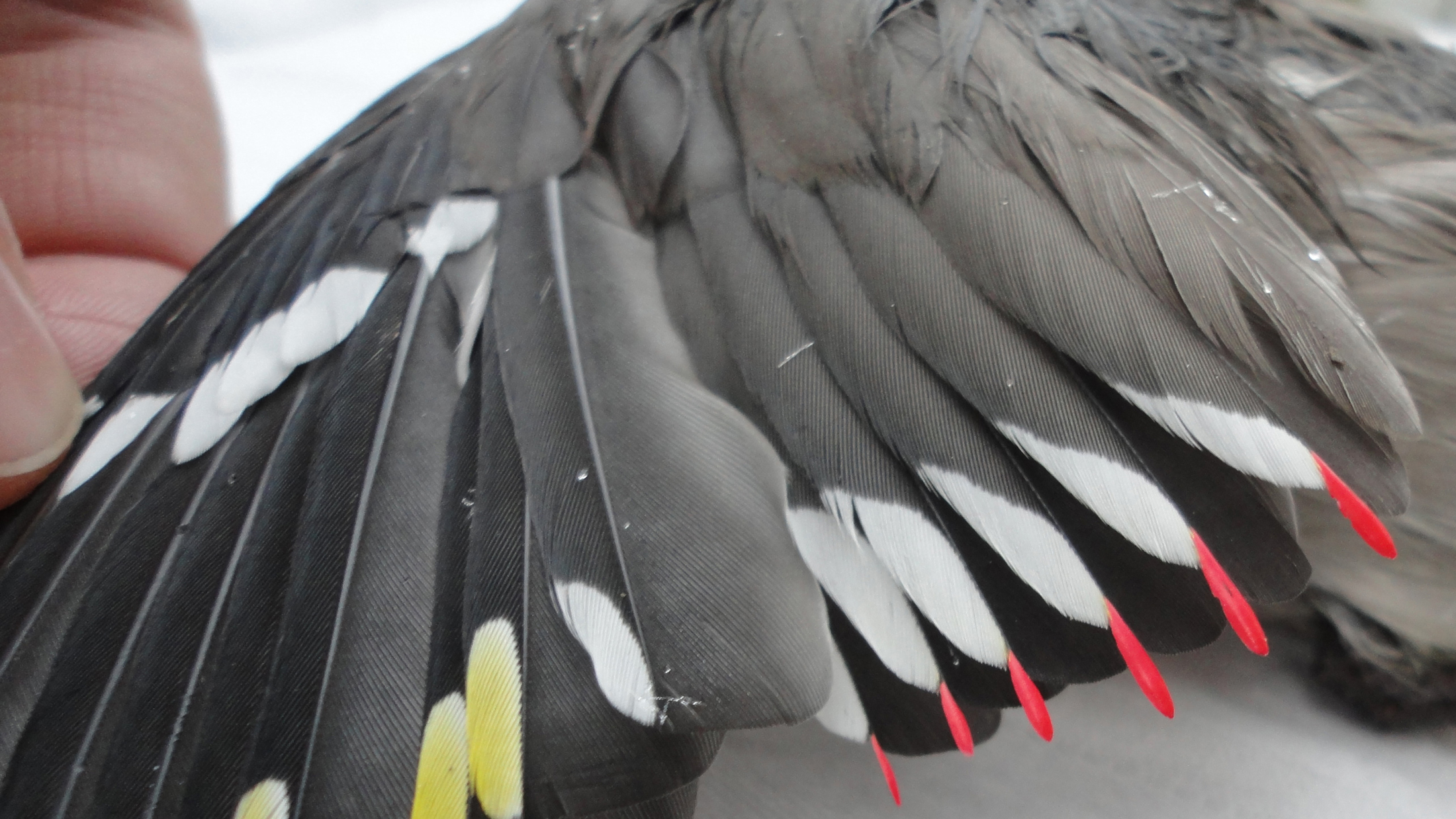
While it was originally thought that the red tips functioned to protect the feathers from wear and tear, there is little to no evidence for this hypothesis.
Rather, red secondary tips appear to be status signals that function in mate selection. Rare individuals have been noted with yellow waxy tips on secondary feathers.
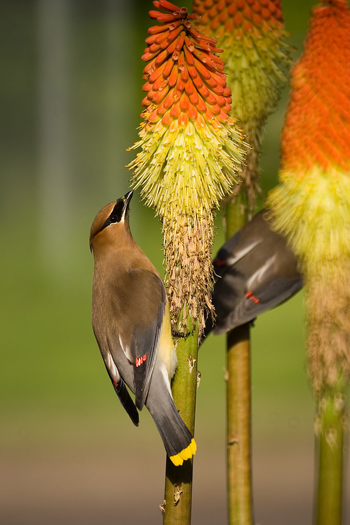
Interestingly, the red appendages of Cedar Waxwings increase in number and size with a bird’s age: individuals with zero to five waxy tips are presumable immature birds, while those with greater than nine are thought to be older.
Individuals within these two categories tend to associate as mates. Pairs of older birds (those with greater than nine waxy tips) nest earlier and raise more young than do immature birds, suggesting that this plumage characteristic is an important signal in mate choice and social organization.
Mehlman says this all suggests that waxwings evolved the red wax secretions as plumage enhancements to signal their age, maturity and social status among waxwings. This is a useful signal in a species that often is found in large flocks.
There is another interesting color phenomenon among Cedar Waxwings. These birds also have a striking yellow tail tip, but in some parts of their range some birds began appearing with orange tail tips in the 1960s.
According to the Cornell Lab of Ornithology:
The orange color is the result of a red pigment picked up from the berries of an introduced species of honeysuckle. If a waxwing eats enough of the berries while it is growing a tail feather, the tip of the feather will be orange.
And about those berries: Cedar Waxwings specialize in eating fruit, an interesting adaptation among North American birds. While we think of many birds as dining on berries, in reality berries are only ever a portion of their diets. Cedar Waxwings can exist solely on berries for months.
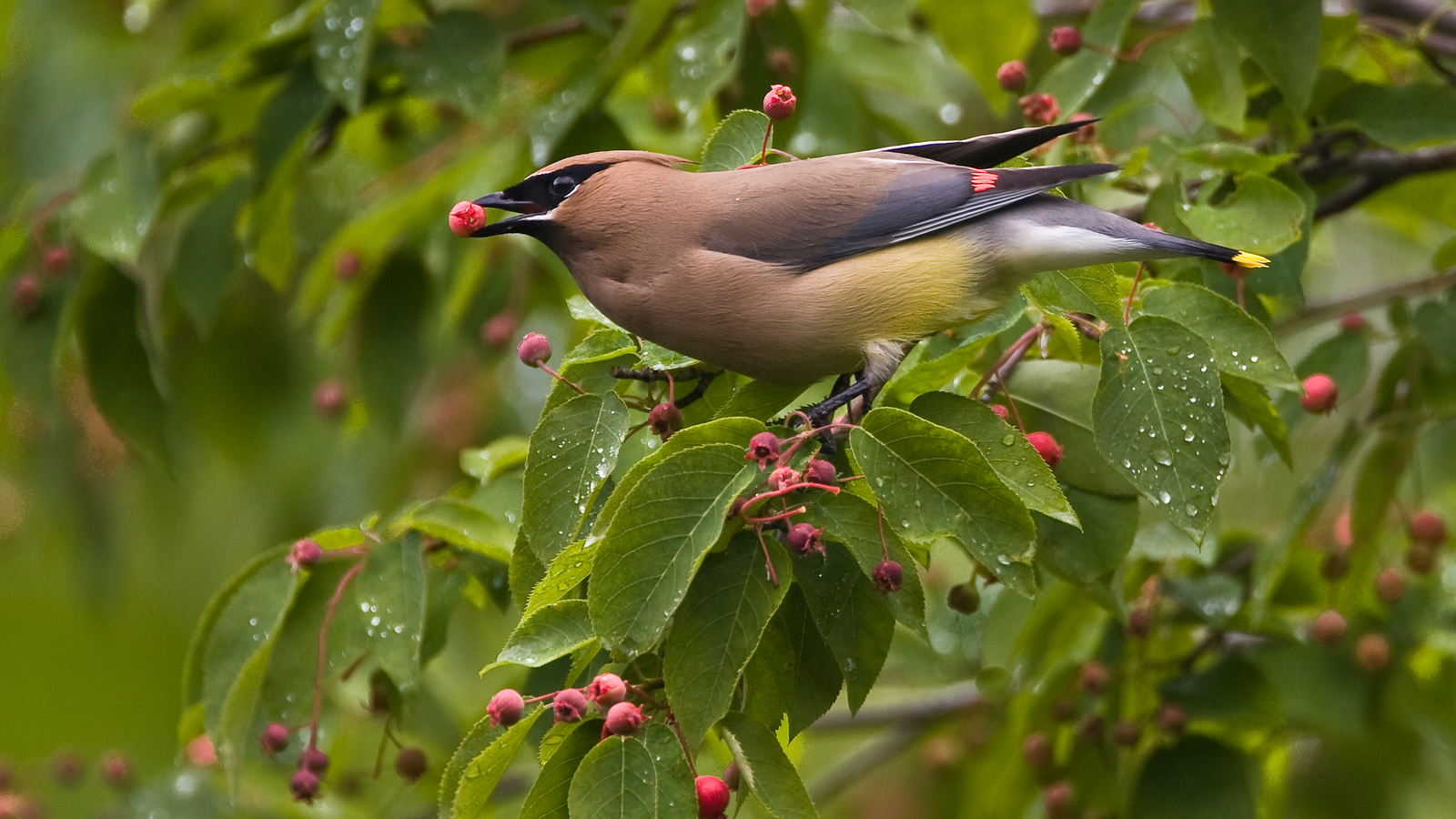
In fact, when that well-known nest parasite the Brown-headed Cowbird lays its egg in a Cedar Waxwing nest, the young cowbird has difficulty surviving. The high fruit diet is not conducive to a young cowbird’s growth and prosperity.
Sometimes, Cedar Waxwings eat berries that have fermented on the vine, leading to inebriated behavior from the birds.
Come summer, waxwings are often seen hunting insects. In fact, when I’m fly fishing a heavy mayfly hatch, I’ll often see them snatching the small insects as they hover over the water.
Even our common backyard birds are full of surprises. Enjoy their antics, and remember that your observations can often contribute to bird research and conservation.
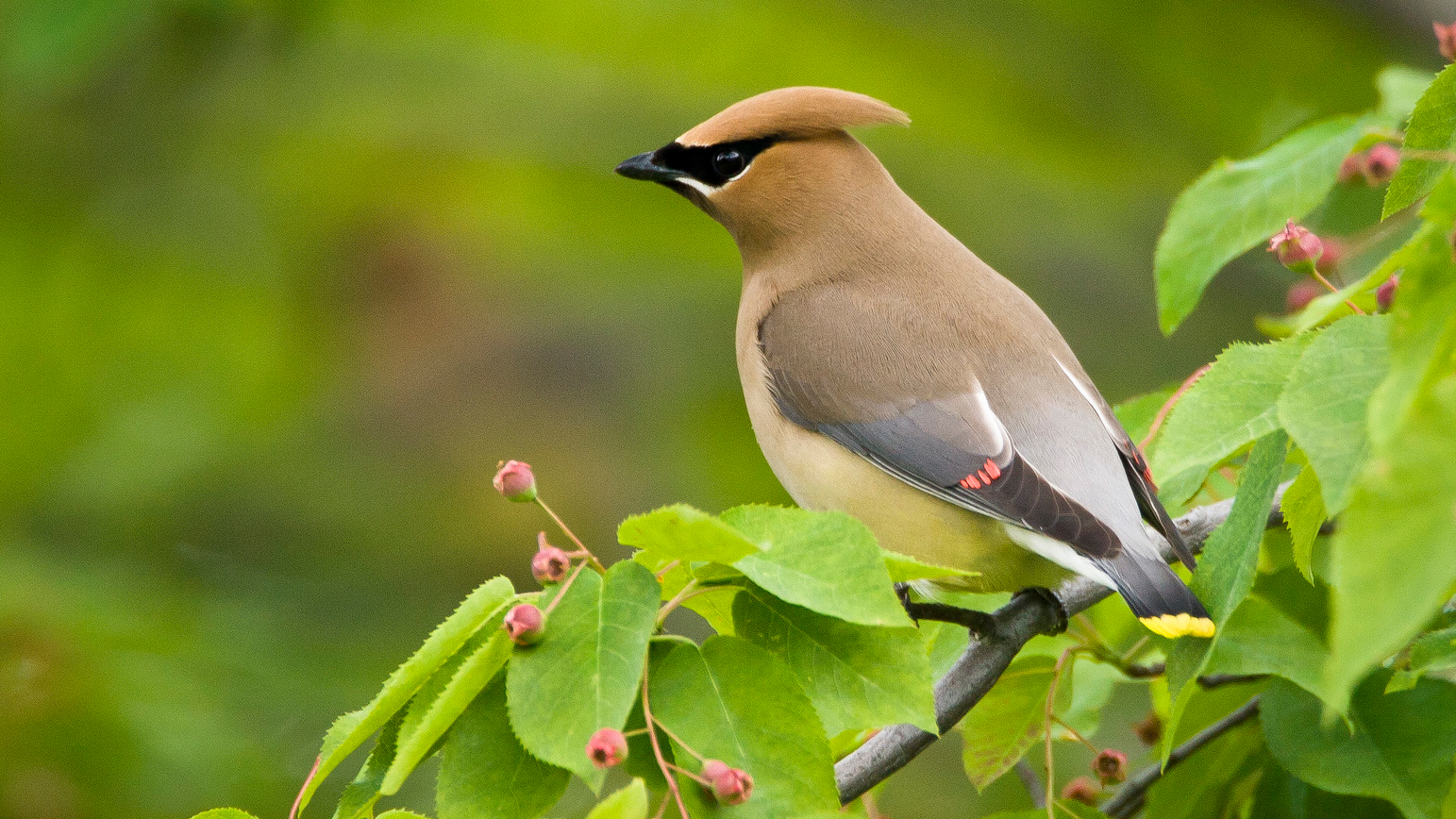
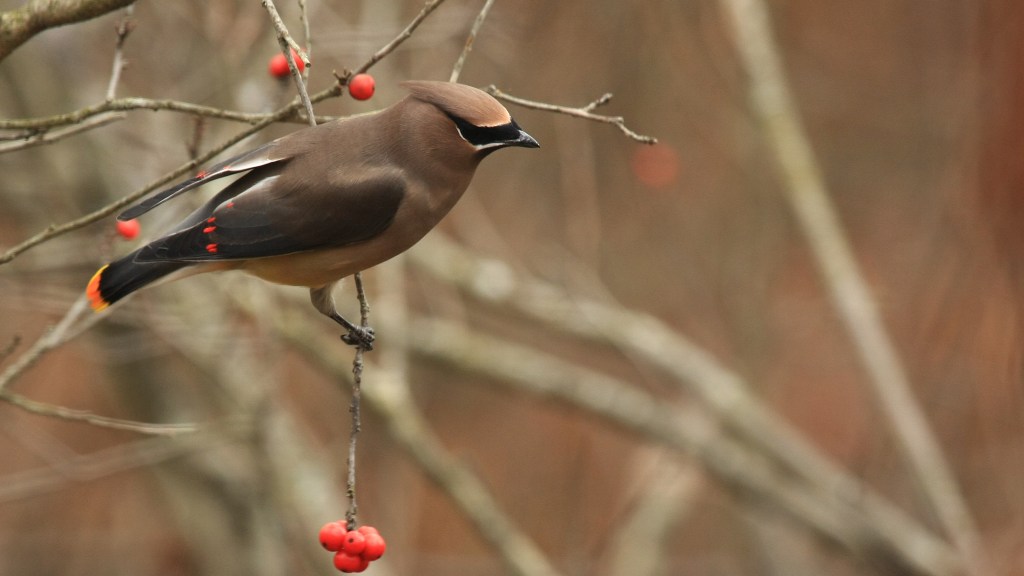



People often justify planting or keeping invasive Chinaberry trees by stating that the fruit is good for Cedar Waxwings. Perhaps the author could comment on that? After all, the Chinaberry has poisonous bark, leaves and berries and changes the acidity of the soil. It often reduces the number of plant species in an area with its dominance and this consequently reduces the animal variety while favoring the Cedar Waxwing.
“Years ago a large flock of waxwings discovered our pyracantha which was covered with berries. They ate until some of them couldn’t fly. I thought that they had just eaten so much that they couldn’t take off, but maybe the berries had fermented, as you say in the article.
I love all animal’s, nature was given by god and to us to cherish, all species in nature, to protect by voice
the given right’s of life in these times where not all people enjoy what god gave us in nature today
THE BEAUTY OF WILD LIFE, THE BIRD’S, THE DEER AND SO ON, WE NEED TO TEACH OUR CHILDREN ALL OF THE BEAUTY ‘S IN NATURE, AS I QUOTED THAT GOD GAVE US, TO ENJOY
NATURE OF WHAT IT IS, WHY IT IS, THE EXPLANATION IS ALWAY’S THERE,IF NOT THE LIBRARIES
OF TODAY HAVE IT, THIS WEB SITE IS A GREAT KNOWLEDGE FOR ALL KIND’S OF QUESTION’S &
ANSWER’S IN THE STORIES THEY DESCRIBE.
Very rare in my neck of the woods in Pennsylvania to see a The Cedar Waxwing but several years ago The was a group eating berries in the woods near my house. I feed the birds so I am always on the lookout for the uncommon species to pass by.. Always exciting to see a rarity.
Great Article. Thank you.
Mother Nature knew exactly the right things to do, and the purpose for all things in all living beings and things in our environments.
Nature is always wise.
Very interesting.
I think I know the answer. I am a Biology graduate so I believe I am right. Huehue
The answer is pretty simple: they use the wax to style/brush-up their crest. Most crests are like a mohawk or is very messy, right? But theirs aren’t because they wax it.
Boom.
Mind Blown.
Very informative. I’m a fan of this species, also.
Great post Matt, really enjoyed it and I always love discovering something new.
So pleased to be introduced to your blog.
Sadly found a dead Cedar Waxing at my house. It had no “wax” on the wings. Immature no doubt. I wonder if the need of a signal of maturity and mating potential is more important since they flock in such great numbers.
They love ligustrum berries sadly because ligustrum is an invasive plant!
I get a flock every year that hang out in an older Norway Spruce. They seem to be feeding on something in it. Could it be the seeds in the cones?
There have been recent articles here about a flock of Waywings whose death at the local high school was attributed to the berries of Nandina .Is this common and are there other berries (such as Oriental Bittersweet)which are also toxic to them?
I learned so much about this beautiful bird. I will pass on the Mayfly observation to my grandson who is a novice fly fisherman!
Thank you!